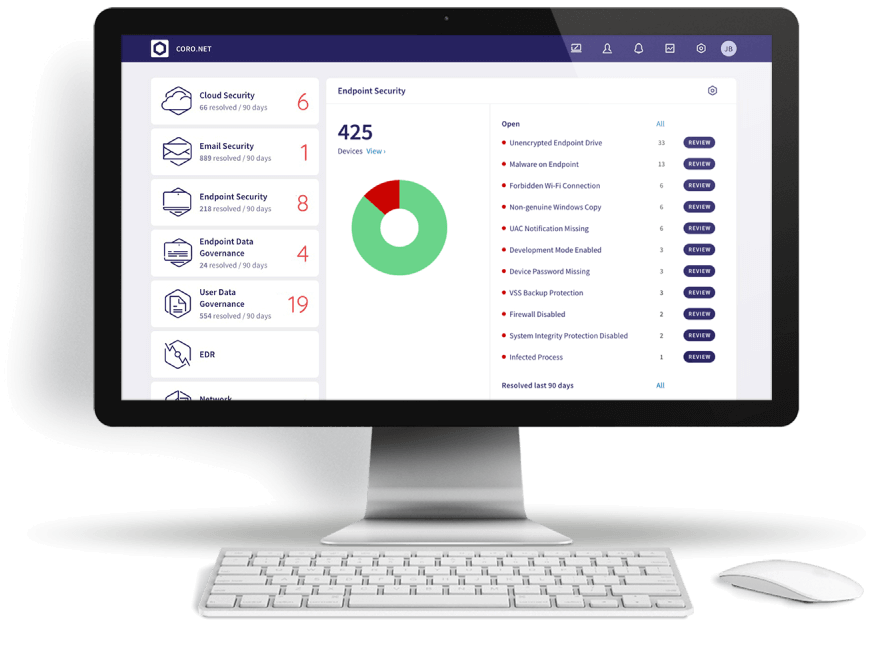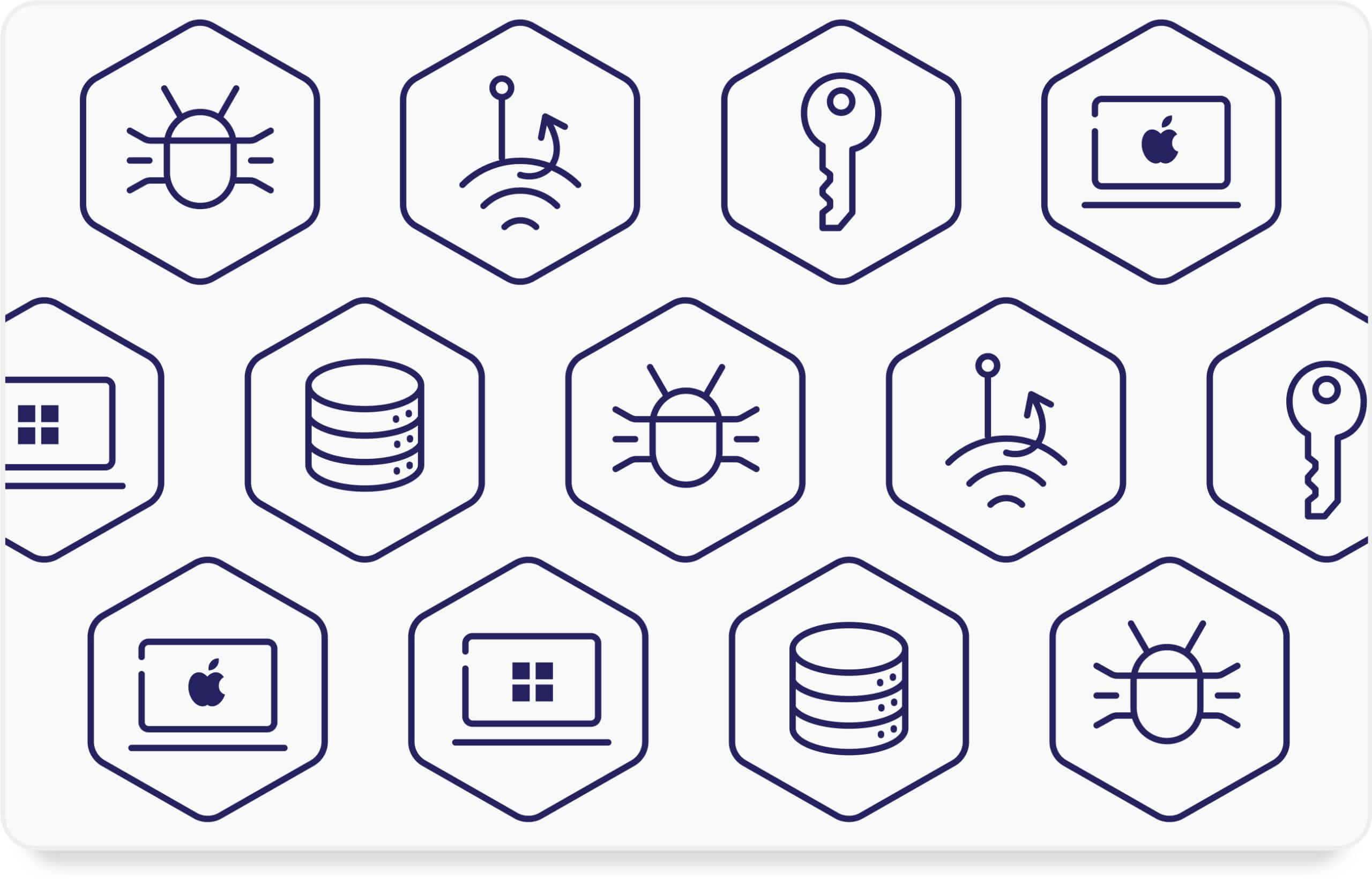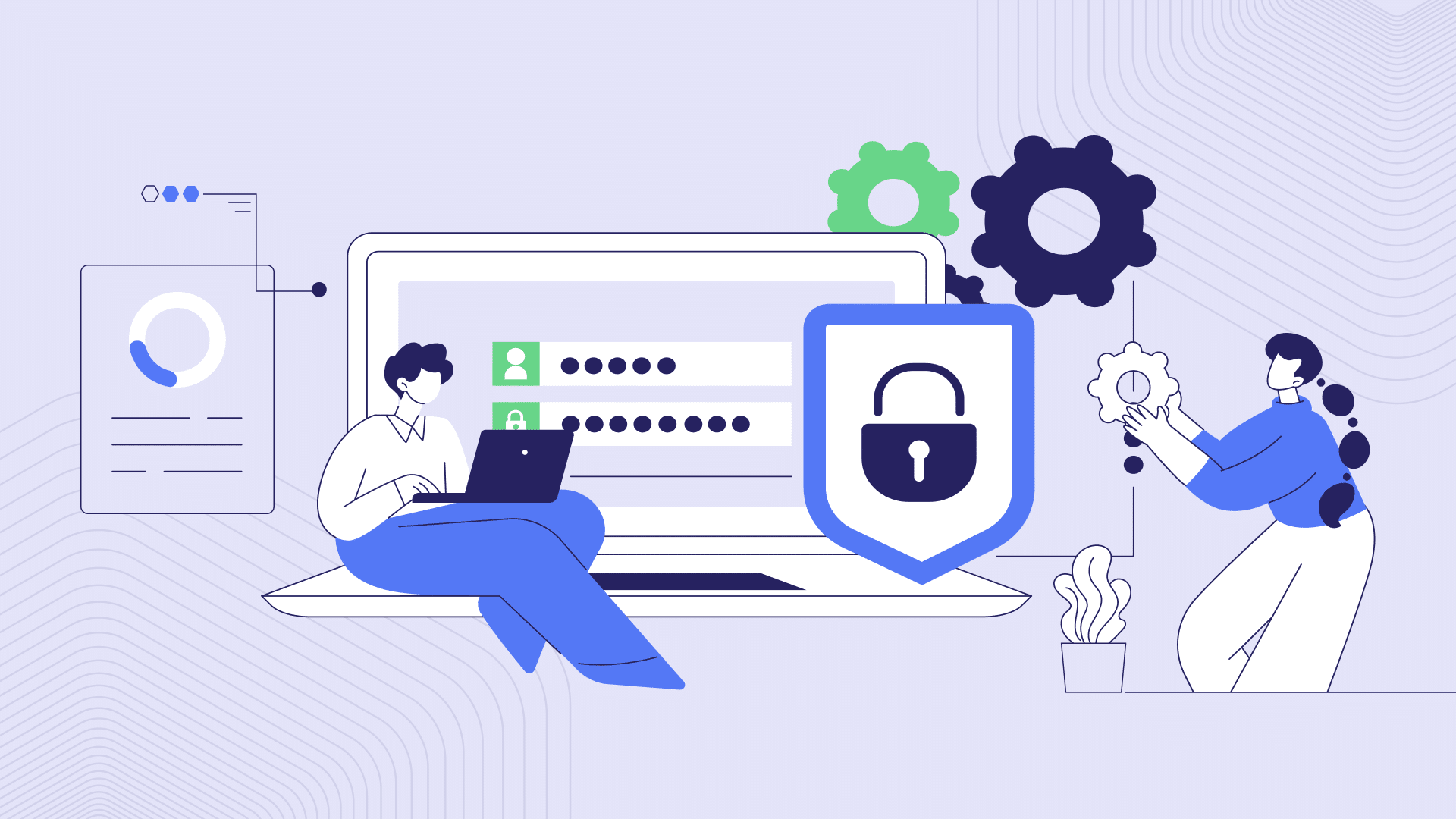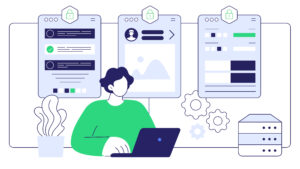If we’ve learned anything in the last few years, it’s that small businesses are not immune to devastating cyber attacks. StrongDM reports that 46% of all cyber breaches impact businesses with fewer than 1,000 employees, and 61% of small and medium-sized businesses (SMBs) were targeted by cyber attacks in 2021. The impact of these cyber attacks on small businesses can be severe. According to SBIR.gov, 50% of medium and small businesses (SMBs) have been victims of cyber attacks, and over 60% of attacked small business owners go out of business following a data breach.
It’s important to remain aware of the cyber threats small businesses face and how to prevent cyber criminals from exploiting vulnerabilities in their defenses to access and steal sensitive data. Let’s take a look at the top SMB security vulnerabilities that cybersecurity teams need to remain aware of.
1. Mobile Devices
Even small businesses have gone remote, hybrid, or at least mobile to some extent. Unfortunately, very few have taken the steps to ensure that their employees’ mobile devices are protected properly. This oversight is all it takes for hackers to gain access to sensitive information… or the entire network.
The Bring Your Own Device (BYOD) trend has introduced new cybersecurity challenges for organizations, mostly because managing a diverse range of devices with varying operating systems and security configurations poses a significant challenge for IT departments. The use of personal devices for work purposes increases the risk of data breaches if the devices are lost or stolen. Hackers can create malware that is specifically designed to infect mobile devices, and can hide it in apps, websites, or even email attachments. Once the malware is installed on a device, it can steal personal information, track the device’s location, or even take control of the device itself.
Hackers can also take advantage of vulnerabilities in mobile devices or apps to gain access to personal information. For example, a hacker might discover a vulnerability in a popular messaging app that allows them to intercept messages sent between users. Mobile devices are also far easier to lose or steal than desktop computers, which might be all a hacker needs to gain access to a company’s network.
The best defense is to implement enterprise mobility management (EMM) tools that can centrally manage BYOD devices, enforce security policies, and remotely wipe or lock lost or stolen devices. Small businesses need to establish clear BYOD policies outlining acceptable device usage, data handling practices, and password requirements. Strong authentication methods, such as two-factor authentication (2FA) or biometric authentication, will up your defenses as well.
Make sure that your employees understand the risks associated with their mobile devices and are regularly trained on proper business cybersecurity practices.
2. Not Having a Proper Incident Response Plan in Place
An incident response plan is one of the most important security measures any company can have, yet many small- and medium-sized businesses (SMBs) simply don’t have one. This is a major oversight, as it leaves businesses vulnerable to cyber-attacks and unprepared to respond effectively.
When a cyber attack occurs on the corporate network, internal teams may not know how to contain the attack or isolate payment systems. They also might not understand what data has been compromised on which business computers, or how to communicate with their customers and stakeholders.
Having a simple incident response plan can help your company identify and contain cyber attacks quickly and effectively. It will also ensure that you have set reporting procedures to mitigate the damage and minimize downtime.
An incident response plan should outline a step-by-step procedure for successfully handling a cyber attack, including:
- A list of key contacts, such as the IT team, legal counsel, and public relations representatives.
- A description of the roles and responsibilities of each team member involved in the response.
- A process for identifying and containing the attack.
- A process for assessing the damage caused by the attack.
- A process for communicating with customers and stakeholders.
- A process for recovering from the attack.
The first step in developing an incident response plan is to identify the organization’s assets and the risks they face. Once the threats have been identified, the organization can develop a plan to mitigate them. The incident response plan should be reviewed and updated on a regular basis to reflect changes in the organization’s environment and the threat landscape.
3. Voice Assistants
“Alexa, how do you prevent hackers from gaining access to your customer information through a voice assistant?”
The voice assistants key personnel might use at home or at work can open a door for malicious actors. Your cybersecurity strategy has to consider the possibility that hackers could exploit voice recognition systems like Siri, Cortana, and Alexa to remotely control iOS and Android devices without any audible commands. This technique—known as remote voice command injection—utilizes electromagnetic radio waves to trigger specific voice commands.
For businesses, this poses a significant threat, as BYOD policies often allow employees to use personal devices for work purposes. If an employee’s device is infected with malicious software through their home Wi-Fi network, hackers can remotely control it, accessing sensitive corporate data or even launching further attacks within the organization’s network.
The good news is that comprehensive MDM (mobile device management) solutions can detect and prevent such attacks by monitoring device activity and verifying user authorization. In the event of a remote voice command injection attempt, the MDM solution can lock down the device, preventing unauthorized access, ransomware attacks, and data breaches.
4. Lack Of Awareness About Cyber Threats
Sometimes, the biggest threat to cybersecurity is not knowing which security measures you need to take. Many companies prefer adopting a reactive approach rather than a proactive one. Cybersecurity is a complex and ever-evolving field, and businesses of all sizes need to take a proactive approach to protect their sensitive data. Penetration testing is a valuable tool for identifying and assessing cybersecurity vulnerabilities, but the real work begins after the pen test report is delivered. Businesses need to carefully analyze the results, prioritize remediation efforts, and implement a comprehensive risk mitigation plan.
Many companies simply install security apps or a virtual private network and believe they’ve done enough to protect customer information and other vital data. Unfortunately, having a few tools and antivirus software installed isn’t enough.
A layered approach to cybersecurity is essential, and businesses should not rely on any single product or technology to safeguard their data. This layered approach should encompass multiple controls that restrict and password-protect access across all entry and exit points of internet traffic, including email and voice communication, internet access through endpoints, and asset access. Your small business should also take steps to control physical access to the building, servers, and devices and limit administrative privileges wherever possible.
Cybersecurity is not a one-time fix, and businesses need to be prepared to continuously monitor, assess, and improve their security posture. This requires a proactive approach that involves continuous learning and adaptation.
5. Inadequate Firewalls
Firewalls remain a critical component of cybersecurity, even in the cloud-based and encryption-focused era. SMBs should deploy multiple firewalls to create a layered defense, including two-way firewalls and interconnected intrusion detection systems (IDS) to monitor network activity for suspicious behavior.
6. Cloud Security
Has your cloud service provider done everything they can to protect your data and networks? How do you know? Cloud platforms have become indispensable for businesses of all sizes, providing access to customers and enabling remote work. However, this reliance on cloud services also introduces new security vulnerabilities.
Cloud-based brute-force and distributed denial-of-service (DDoS) attacks are a significant threat and even well-established providers like AWS are not immune to outages.
To protect against these threats, businesses should implement end-to-end encryption using a strong encryption standard like AES 256. Layering a physical and virtual endpoint security solution on top of cloud-based security measures can provide an extra layer of protection and help detect zero-day threats and other attacks. Don’t leave your cloud security to chance – make sure that you discuss security upfront with any new service provider you deal with.
7. Endpoint Devices
Any endpoint device with an internet connection can open your small business up to a cyber attack, whether it’s a printer, a smart TV, or an employee’s device infected with malicious code. Through these endpoints, hackers can gain access to sensitive data, such as financial information, human resources files containing payroll data, and intellectual property.
Businesses should implement endpoint security solutions that provide comprehensive protection for all relevant physical machines and operating systems, including Linux, Mac, and Windows. Whatever solutions you choose should offer redundancy and scalability to eliminate single points of failure.
8. Poorly Configured Systems
Small and medium-sized businesses (SMBs) are often targeted by cyberattacks due to misconfigured security systems, weak credentials, and insecure mobile devices. Attackers exploit misconfigured security systems to gain access to sensitive data. For instance, misconfigured AWS S3 buckets can lead to data leakage, while cloud security misconfigurations can have severe consequences. Default passwords and weak login credentials are easily exploited by attackers to gain unauthorized access to systems and data.
The best way to reduce this risk is to document secure baseline technology controls as checklists and use them every time new assets are deployed and perform regular change management audits to identify and address potential security risks introduced by changes to the IT environment. The good news is that this doesn’t have to be the responsibility of your (overburdened) IT team. You use security automation tools to assist in configuration management and reduce the risk of human error.
9. Employees
Phishing attacks against employees take various forms, but they all involve attempting to trick the victim into revealing sensitive information or clicking on a malicious link. Email phishing is the most common type of phishing attack, and it involves sending emails that appear to be from legitimate sources, such as banks, credit card companies, or employers. These emails often contain links that, when clicked, take the victim to a fake website that looks like the real website. Once the victim enters their personal information on the fake website, the phisher can steal it.
Customers often employ less rigorous security practices than businesses, making them an easier target for hackers. Payment transactions are particularly vulnerable to phishing attacks, which can lead to data breaches and financial losses. SMBs should carefully vet third-party banking and payment services and implement a security solution with a global threat intelligence network for proactive threat detection and mitigation. They should also regularly train employees about the dangers of phishing scams and how to prevent becoming victims of them.
10. Intruder Quarantine
Prevention is better than cure, but it’s not always possible. So, what should you do when there is a security breach? You must isolate compromised files and prevent further damage. SMBs should employ a security solution with local and remote quarantine management capabilities for both on-premises servers and cloud storage.
Local quarantine management allows IT security managers to isolate infected files on local servers without having to remove them from the network entirely. This can be useful if the files are needed for business operations, as it allows IT security managers to keep the files accessible while they are being scanned for malware. Remote quarantine management allows IT security managers to isolate infected files on cloud storage platforms, such as Amazon Web Services (AWS) or Microsoft Azure. This can be useful for protecting files that are stored in the cloud, as it prevents them from being accessed by unauthorized users.
Conclusion
No business is too small to be a victim of a cybercrime. Good cybersecurity starts with identifying the weak points in your defenses.
With Coro, you don’t have to face this challenge alone. Coro will continuously monitor your endpoints, email, cloud applications, and network environment to identify and neutralize potential threats. Take a look at our platform to learn more.






















